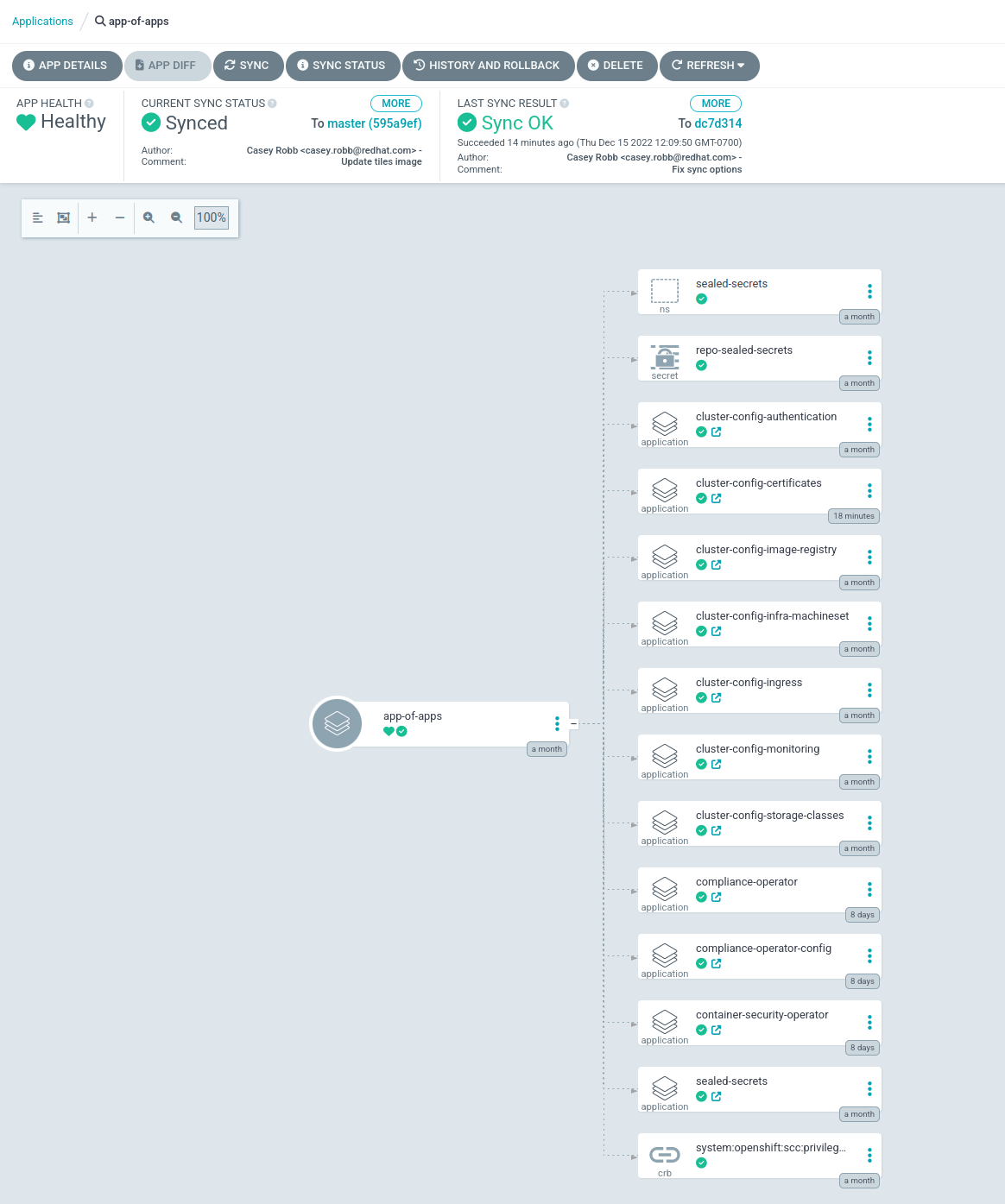This repository contains the configurations I utilize for my OpenShift clusters, taking cues from Gerald Nunn's Standards.
For more insights into OpenShift GitOps and Kustomize, check out Mark Roberts blog post Your Guide to Continuous Delivery with OpenShift GitOps and Kustomize.
Configuration for individual clusters is located in bootstrap/clusters/overlays. To deploy a cluster's configuration, set up an Argo CD application in components/argocd/{appconfig} targeting bootstrap/clusters/overlays/{clustername}.
The components/apps directory houses the cluster-config and operators subdirectories. These subdirectories store custom configurations for tasks such as day2 operations setup and the deployment of operators. Meanwhile, the components/argocd directory holds configurations that will showcase your apps and/or operators (as referenced earlier) within ArgoCD.
oc apply -k manual
When you run the command oc apply -k manual, the following happens:
oc(OpenShift CLI) recognizes the-kflag and invokes Kustomize on themanual/directory.- Kustomize reads the
kustomization.yamlfile to determine which resources to include and any modifications to make. - The resources defined in
openshift-gitops-crb.yamlandopenshift-gitops-subscription.yamlare processed and prepared for application to the cluster. - The processed resources are applied to the OpenShift cluster. This results in:
- The necessary permissions being granted via the ClusterRoleBinding.
- The GitOps Operator being installed or updated based on the Subscription.
vi clusters/{cluster-name}/kustomization.yaml
When you apply the configurations using Kustomize:
-
Initialization: Kustomize begins by reading the
kustomization.yamlfile in theclusters/{cluster-name}/directory. -
Resource Aggregation: Based on the
resourceslist in thekustomization.yamlfile, Kustomize aggregates configurations from multiple locations:../../components/argocd/acs # This includes configurations related to the deployment of the ACS Operator. ../../components/argocd/banner/overlays/{cluster-name} # This brings in configurations specific to the `{cluster-name}` overlay for banners. ../../components/argocd/console-link/overlays/{cluster-name} # This integrates configurations for console links in the `{cluster-name}` overlay. ../../components/argocd/defrag-etcd # This adds configurations related to defragmenting etcd.
-
Configuration Processing: Kustomize processes all the aggregated configurations, potentially applying patches, variable substitutions, and other transformations as defined elsewhere in the
kustomization.yamlor associated files. -
Application: Once processed, these configurations are ready to be applied to the OpenShift cluster, setting up the specific components and configurations for the
{cluster-name}cluster as defined.
oc apply -k bootstrap/clusters/overlays/{cluster-name}
When you run the above command for a specific {cluster-name}:
-
Initialization: The
oc(OpenShift CLI) detects the-kflag, prompting it to use Kustomize on thebootstrap/clusters/overlays/{cluster-name}/directory. -
Resource Aggregation: Kustomize reads the
kustomization.yamlfile located in thebootstrap/clusters/overlays/{cluster-name}/directory. This file will list resources, patches, and other configurations specific to the chosen cluster. -
Configuration Processing: Based on the
resourceslist and other directives in thekustomization.yamlfile, Kustomize aggregates and processes configurations. This might involve:- Incorporating base configurations and applying overlays specific to
{cluster-name}. - Applying patches, variable substitutions, and other transformations as defined in the
kustomization.yamlor associated files.
- Incorporating base configurations and applying overlays specific to
-
Application: The processed configurations are then applied to the OpenShift cluster. This sets up the cluster with configurations tailored for
{cluster-name}, ensuring it has the necessary components and settings.

